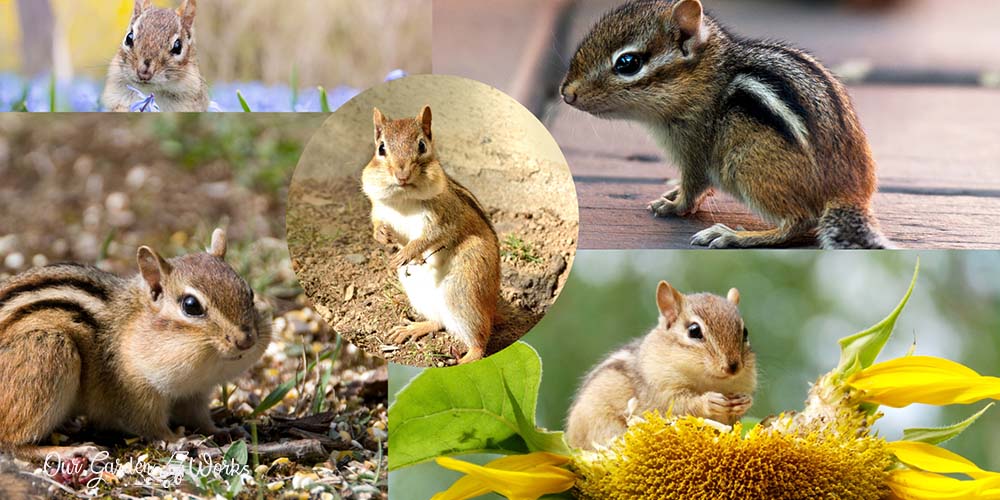The cheeky seed-loving chipmunks are often deemed adorable and gentle. As they find and hoard food in preparation for winter, you might see them spying on your freshly planted seedling, which will sooner or later be gone.
Learning how to keep chipmunks out of potted plants can help you save your plants and somehow co-exist with these little critters around your yard.
As a gardener and plant lover, it can be frustrating and heartbreaking to see your potted plants being dug up by chipmunks and other critters.
To find a better and more animal-friendly solution to your chipmunk problem, it’s best to understand their behaviors and the factors that invite these cheeky diggers into your potted plants.
Chipmunk Behaviors: Why Do Chipmunks Dig Around Plants?
Chipmunks are nimble and lively just like their other critter friend squirrel. Despite their small physique, they can be very damaging to outdoor spaces due to their habits.
Here are some of their behaviors that you should know based on the damage that they create in the garden:
They take digging and burrowing as a pastime and escape plan.
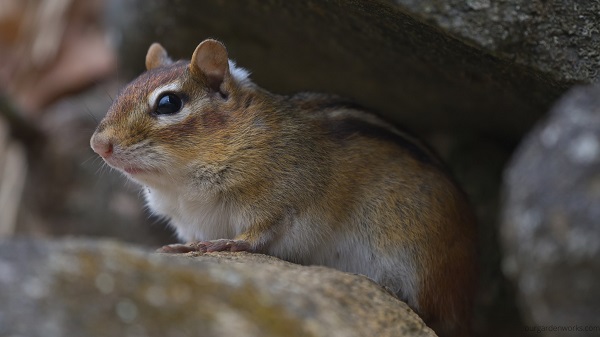
Chipmunks are known for two things: cuteness and obsession with digging. They dig the soil either out of boredom or to hide from predators and stash their seeds.
These cheeky little critters can dig up to 3 feet and create burrowing tunnels which cause the destabilization of home foundations.
Oftentimes, chipmunks are just half a mile away from their burrow. So when you see a nest, they’re surely looking at you from afar.
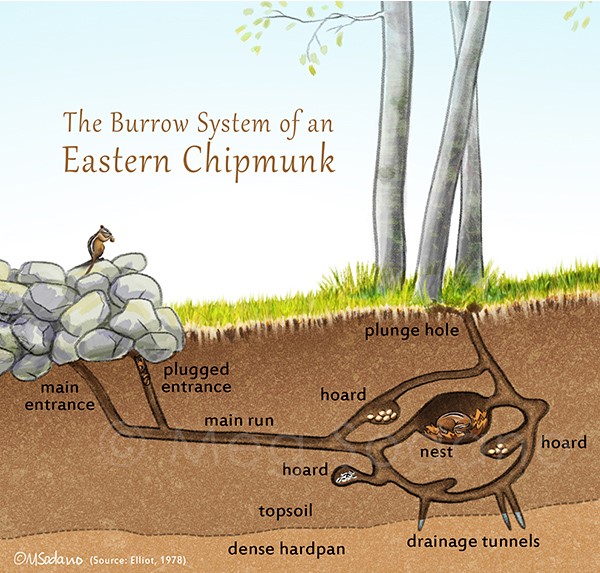
When predators come, you would see them scurrying towards the burrow and stay there until the threat is gone.
They are omnivores and hoarders of food.
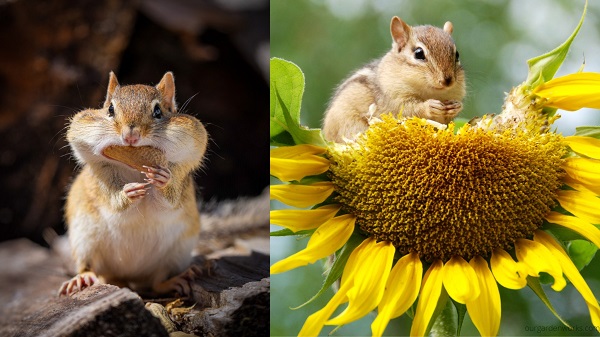
Chipmunks would go to great lengths to have access to seeds and other food sources. They are notorious hoarders, especially during fall to prepare for winter.
They often love feeding on:
- Nuts.
- Seeds.
- Berries.
- Mushrooms.
- Roots.
- Bird seeds.
- Corn.
- Insects.
- Plant roots.
When seeds and edible roots are out of sight, chipmunks might go after your pet’s food or steal grass seeds in your garage.
They are creatures of habit.
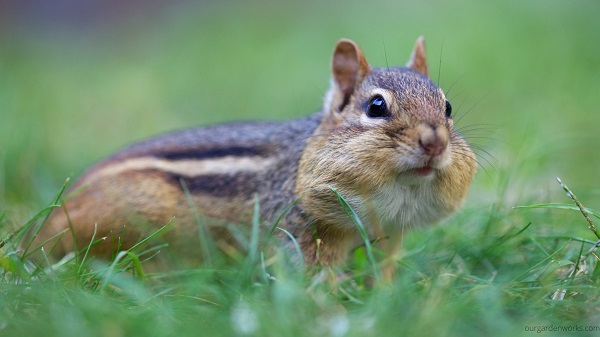
Chipmunks are creatures of habit who like to store their food in one place. If they chose your pots as the perfect storage for their winter seeds, you can expect that they will keep causing problems to that same potted plants.
Their habit of returning to their stash of seeds puts you at an advantage in setting up your traps and lures and discourages them to come back.
Other than their habits, chipmunks are highly susceptible to stress than other wildlife animals. Beyond their gentle nature, they can show aggression or other repetitive behaviors when they are stressed.
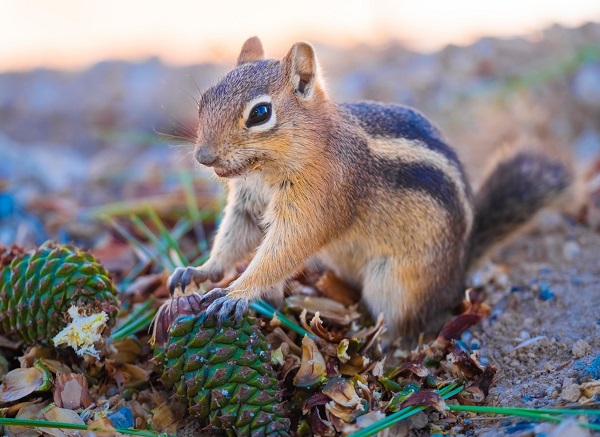
They are the opposite of nocturnal – diurnal.
Chipmunks will often visit your potted plants during the day when they are most active. They also hide in their burrows at night due to their poor eyesight in the dark.
If you want to confirm which critter loves to munch on your freshly planted and germinating seeds, observe them scurrying around your garden early in the morning till the afternoon.
Chipmunks may be night-blind but they are highly skilled to detect motions around them. They can track shadows from flying predators too.
If you find a baby chipmunk, its mom is just somewhere close.
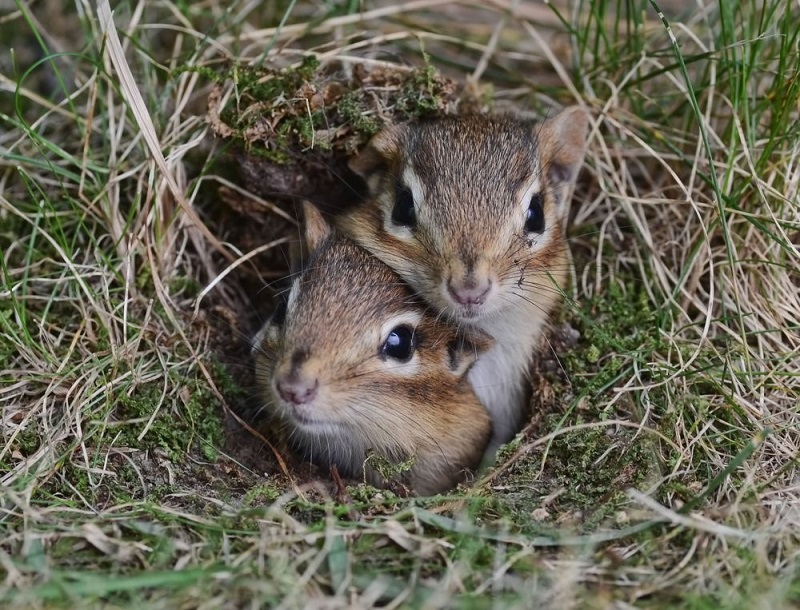
The growing season is also the breeding season for chipmunks. Each female chipmunk can give birth to 4 to 5 babies at a time.
The mother chipmunk may huddle her kids around the garden but she will allow them to explore on their own. However, their mom would usually be in close proximity to her kids at all times to protect them from predators.
They love snacking.
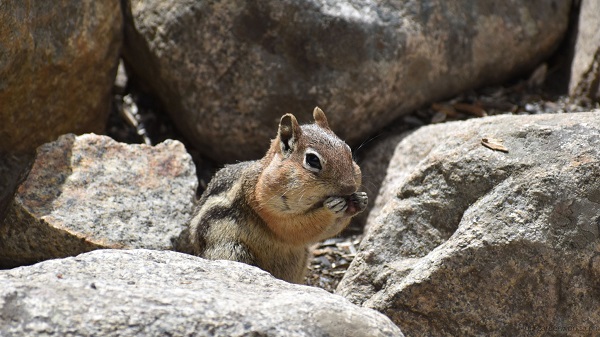
Unlike deer, chipmunks do not rely on fat during winter to survive.
According to the National Wildlife Federation, when chipmunks enter the torpor stage, they will look like they’re dead by having 250 heartbeats per minute down to 4 heartbeats per minute. However, they will occasionally go to their stash of seeds and eat when hungry then go back to being in torpor.
For this reason, they often double down on collecting as much as seeds, nuts, and plant roots as they can in the fall.
They love to hide.
Deciduous trees in the yard, shrubs on the fence lines, and a pile of rocks in the yard can attract a chipmunk family to your property.
They are non-aggressive animals that would rather run to their burrows at the sight of a predator than fight it off.
In the wild, their home is in deciduous forests and woodland. However, lack of such habitat and food may lead them to stay in:
- Urban parks.
- Residential areas.
- Fence lines.
- Piles of yard scraps.
- Under logs and trees.
- Lawns next to a ground cover.
How To Keep Chipmunks Out of Potted Plants – 10 Ways
What seems to be small and gentle critters can cause great damage to your garden if left unmanaged.
Here are some ways how to keep chipmunks out of potted plants and keep them away from your precious plants:
1. Wooden skewers
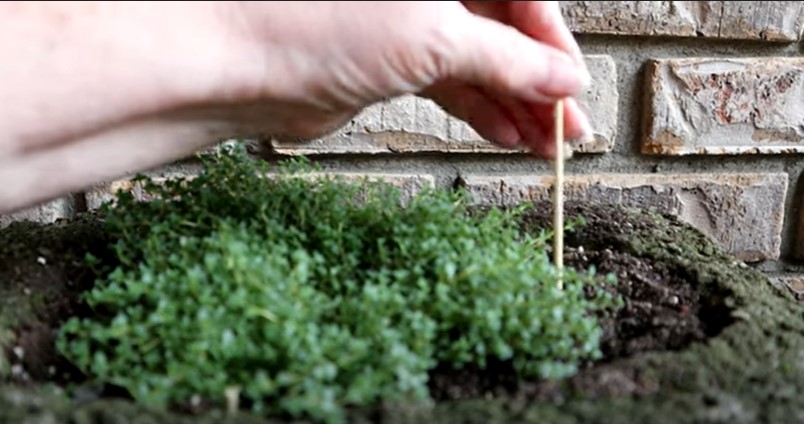
Chipmunks have soft physiques and any sharp object can alert them to sense danger. Probably the easiest way in this list to discourage them from damaging your pots is to use that sense of danger to keep them at bay.
Placing sharp objects like forks can do the trick but it’s best to use the pointed tip of skewers.
You can cut it into pieces to achieve the ideal height for the pot. It also blends with the appearance of the pot compared to forks and other sharp objects.
Once done, chipmunks who will try to dig the pot will sense the sharp object and scurry away to look for another place to mess with.
How to place wooden skewers in a pot?
- Select 3 to 6 skewers that have the same height as your pot or longer. You will push the skewers into the soil so they have to be long enough to stick out.
- Leave one to two inches of allowance for the skewers that will keep it protruding on the soil surface. Break the wooden skewers by hand and place the side with a pointy end at the top.
- Stick the skewers into the soil with the flat end at the bottom and the sharp end protruding on the soil’s surface.
2. Row covers
Row covers are foolproof chipmunk repellent for your newly planted seeds or seedlings in pots.
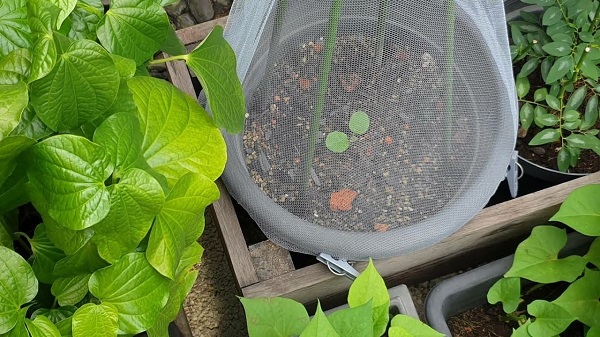
Chipmunks don’t have long nails that can tear the row covers. What’s more, air and sunlight can still pass through the row cover which will help grow the seedlings.
There are two approaches to using row covers for pots. You can either cover it directly over the pot or tuck the hem under the pot.
Another option is to use a frame to adjust the height of the row cover. You can use an old hanger as a brace or a makeshift brace to extend the leg room from growing seedlings.
Pro tip: The row cover may filter the sun for your seedlings. Once the seeds produce their true leaves, you may remove the row covers to let in the unfiltered sunlight and boost the growth of your plants.
3. Motion-activated decoys and sensor sprinklers
What better way to make use of your kid’s toys than to scare some chipmunks from burrowing in your pots.
Chipmunks are very sensitive to motion and a single snap can make them jump or dash off your garden.
Another option is installing sensor sprinklers next to your pots. Once chipmunks are detected, they’ll be splashed with water, run for their lives, and find a new home.
4. Adopt a pet
Having a pet is possibly a huge commitment to take just to take care of your chipmunk problems.
However, if you’re someone who’s been planning on having a pet as a companion, this might be the best time to get one.
Chipmunks treat domestic cats and dogs as a threat. Their smell and presence around your potted plants will naturally repel the critters.
5. Irish Spring bars
Chipmunks have a strong sense of smell, aside from motion. They are also not a fan of aromatic herbs and strong scents.
Using that kind of behavior, you may hang some aromatic stuff like Irish spring bars next to the pots.
You may also try to place coffee grounds and herbs like oregano, lavender, and rosemary along with your potted plants on the porch to repel these cheeky critters.
6. Milorganite
If aromatic herbs and soaps don’t drive the chipmunks out of your pots, maybe something pungent would do.
Milorganite is an organic nitrogen fertilizer made of kiln-dried microbes from the Milwaukee Metropolitan Sewerage District.
It is one of the oldest brands of nitrogen fertilizer born out of the local community’s effort to recycle and filter wastewater.
Most gardeners use the strong scent of Milorganite to drive away deer and rabbits that are eating hostas, arborvitae, and other flowering plants of summer.
You can sprinkle it around the potted plants instead of using other fertilizers to discourage the chipmunks from digging the pots. It may stink for a day but the smell will eventually dissipate the next day.
7. Aromatic spices
Intense smell and flavor from spices can also discourage chipmunks from digging into your potted plants. It is a non-toxic and inexpensive way of repelling critters which will naturally protect your plants until the end of the season.
Here are some of the spices that you can use:
- Cayenne.
- Chili powder.
- Red pepper flakes.
8. Apple cider vinegar spray
Vinegar has a strong scent which qualifies as another pungent agent for repelling chipmunks.
Simply mix two tablespoons of apple cider vinegar in a bottle of water and spray it on the pots and topsoil. Make sure to avoid applying it directly to the soil since vinegar can alter the soil’s pH level and make it more acidic.
9. Live traps
Live traps are a good way to actually catch the culprit critter and send them off in the wild. You can use the live traps used for rodents and use sunflower seeds or other nuts to lure them in.
If you happen to catch an adult chipmunk, there’s a big chance that it has some babies around. Catch the whole family using your trap before placing them in the forest.
Chipmunks are state-protected animals and killing is an offense. Better place them in the wild where they can find new sources of food and propagate.
10. Give them food
Lastly, to keep these critters off your pots with germinating seeds, give them food instead. Place a bowl of seeds in an area away from your potted plants and close to shrubs and trees.
As a source of food, it will distract them, and may not even pay close attention to your potted plants. You may even get a chance to see them adorably stuffing their cheek pouches with seeds.
5 Fun Facts About Chipmunks
- Chipmunks don’t live long and only has a lifespan of 2-3 years.
- The common species of chipmunks in the US are Eastern chipmunks and Western chipmunks.
- A single tiny chipmunk can collect up to 165 acorns in one day and stretch its cheeks three times wider than its head.
- Chipmunks cause big damage to the soil because the entrance to their burrow can extend to a whopping 20 feet long.
- When mating and in danger, chipmunks assert dominance by giving off a bird-like shriek.
Frequently Asked Questions (FAQs)
Do coffee grounds keep chipmunks away?
Yes. Coffee grounds possess an intense aroma that can irritate the sensitive noses of chipmunks.
What scent will keep chipmunks away?
Most intense aromas drive chipmunks away, ranging from spices, soaps, and the smell of predators
Final Thoughts
We hope that this post helped you with how to keep chipmunks off potted plants. They may share adorably cute features and behaviors but do not underestimate the damage they can create in building their nests.
We highly advise the use of animal-friendly approaches to wildlife animals like chipmunks because of the essential role they play in the ecosystem.
Which of the methods mentioned above worked for you? Let us know in the comments and please don’t forget to share this post with your friends.
